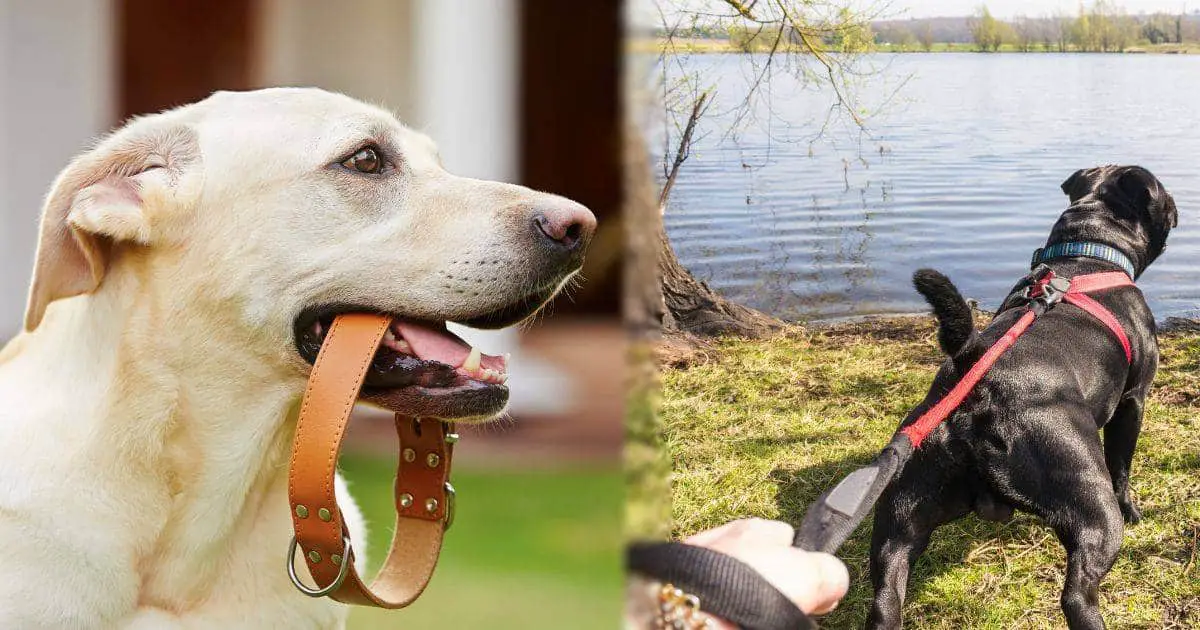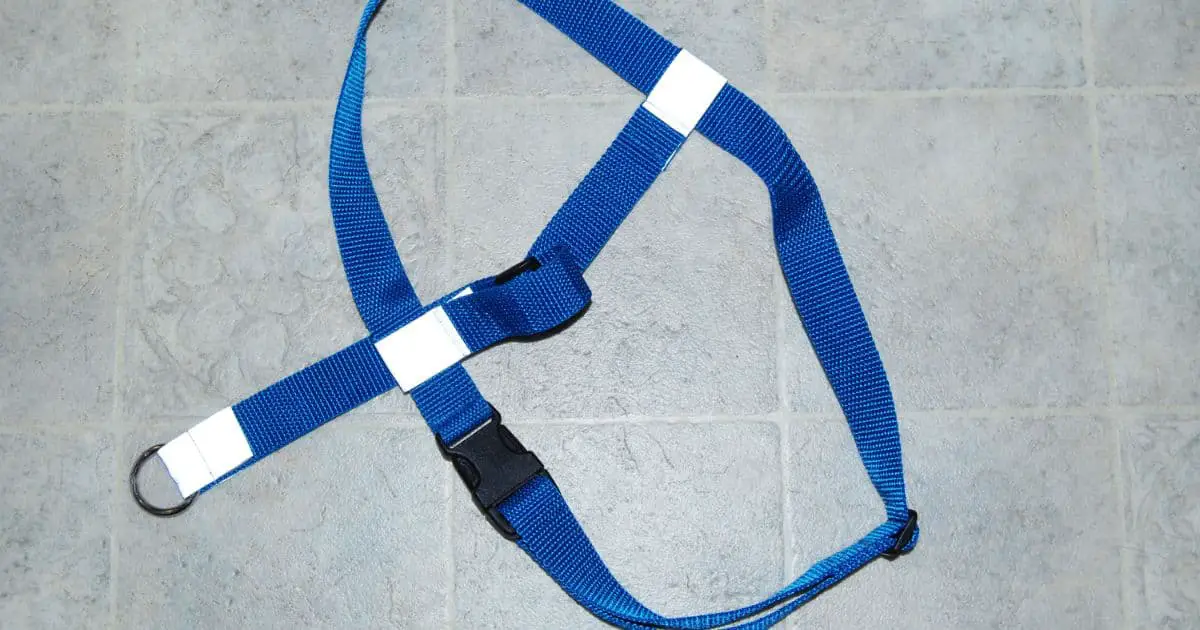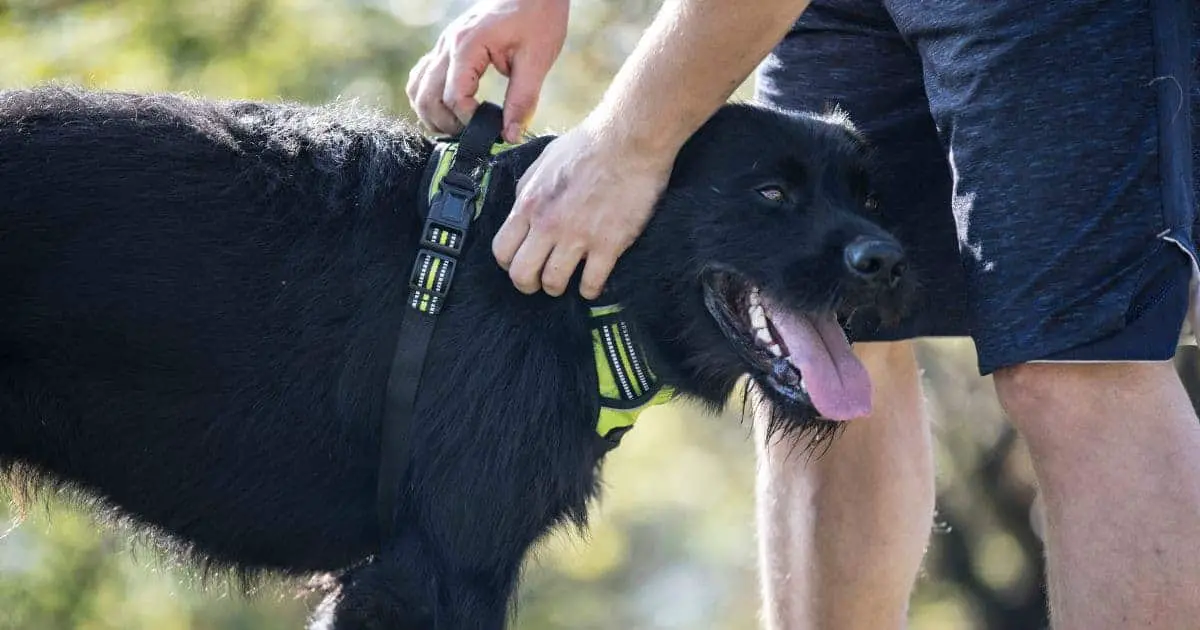The question may seem simple, but adequately securing a dog’s harness is complex, especially when you are new to the process. Many harnesses consist of several buckles and snaps, making it quite challenging to tell which paw will go where. Most pet parents often ignore doing proper research before investing in a dog harness. However, they are also not at fault, as most pet accessories do not come with safety instructions.
If you’re wondering how tight a dog’s harness should be, look no further. This article will cover the ins and outs of dog harnesses, especially for those unfamiliar with the topic.
Dog Collars or Harnesses? How Tight Should a Dog’s Harness Be

You’re better off using a harness for your dog, as it will help keep your pet comfortable. They’ll have a smooth experience during their daily walk. You may have noticed most of the pet dogs in your neighborhood wearing harnesses for the same reasons as mentioned.
However, many types of collars are available for dogs, such as flat collars, shock collars, reflective collars, etc. Still, they all have a primary function similar to any standard dog collar. While a dog collar keeps your pet safe when lost, it is risky to use, as it might cause a choking hazard to the dog when pulling the leash too hard.
It’s much safer to use a dog harness, as it puts less strain on the dog when pulling, and offers greater control than a pet collar. In any case, you must purchase a harness that fits perfectly to your dog, as an ill-fitting harness can expose your dog to dangerous risks.
How Are Harnesses Classified?

There are typically three categories of dog harnesses: front-clip harnesses, back-clip harnesses, and dual-clip harnesses.
Front Clip Harness
This harness type is helpful for hyperactive dogs who love pulling aggressively. As the name suggests, the D ring of the harness is located at the front of the dog’s chest.
Back Clip Harness
This type of harness is the most standard and is widely available in the market. The D ring is located at the back so the leash does not get tangled up with the dog’s legs. However, the back clip harness does not help discourage excessive pulling, unlike the front clip harnesses.
Dual Clip Harness
A dual clip harness has two D rings at the dog’s back and chest area, offering greater control than the two harness types mentioned above. However, the dual clip harness is expensive and slightly tricky to get used to.
You can find and acquire all of these harness types here.
Finding the Right Harness Size
Every dog varies in size and shape, so choosing the correct harness for your pet is necessary for pet parents.
- Begin with measuring your dog accurately with a tape measure.
- To determine the exact size of your dog’s harness, you can wrap the soft measuring tape around the widest part of your dog’s chest.
- You can also check out the pet store where you buy the harness, as they will provide a sizing chart and help you purchase a perfect, well-fitting harness for your dog.
How Should You Secure Your Dog’s Harness?

How tight should a dog’s harness be? There are different types of harnesses available in the market, but a standard harness’s job is to encircle your pet’s neck and chest, with four openings for its legs to go into. A regular harness is typically made of nylon straps with rings and buckles.
To secure your dog’s harness, follow the instructions and guidelines provided by the manufacturer or the pet store. Carefully put your dog’s legs inside the openings, and tighten the straps. However, the straps must not be too tight or loose. A way that you can check for this is by walking your dog around and checking for any signs of discomfort or slipping.
Adjusting Tightness Levels
Rule of thumb says that once you tighten the harness straps around your dog, you must be able to insert two fingers inside the belt at any time. The harness should be this tight for a dog. If accurate, then the harness has fitted perfectly. If you can insert more than two fingers, you need to adjust the harness as it might be slightly loose on your dog. Similarly, a very tight strap might cause a risk of injury to your dog if it tries to pull aggressively.
Fortunately, you can adjust all types of harnesses easily, so you can keep your pet safe by buying a well-fitting harness by following the correct size guide according to your pet’s body weight and shape.
What Are the Signs of a Harness Being Too Tight on the Dog?
It is essential to check if the harness on your dog is too tight because it can make your pet uneasy and cause much discomfort while walking. Hence, the following are a few signs to check if your pet is wearing an ill-fitting harness.
- Loss of fur, rashes, or chafing around the harness area.
- If it is too loose, the D ring will fall on the sides, according to the type of harness you are using on your pet.
- Check if your dog resists when you make it wear the harness.
- See if all the straps follow the rule of thumb for tightness.
- Assess your dog’s movements and body language.
Final Thoughts
Harnesses are excellent alternatives to dog collars when ensured that they fit your dog accurately without being too tight or loose. This article answers your question on how tight should a dog’s harness is. A well-fitting harness will make your dog enjoy its daily walk and exercise, while a tighter one will make it aggressive and reluctant to do everyday activities.
However, dogs gain body weight and change their body shapes. Checking the harnesses regularly and adjusting them accordingly is essential. If you are still unsure how tight a dog’s harness should be, check with your local pet store.
